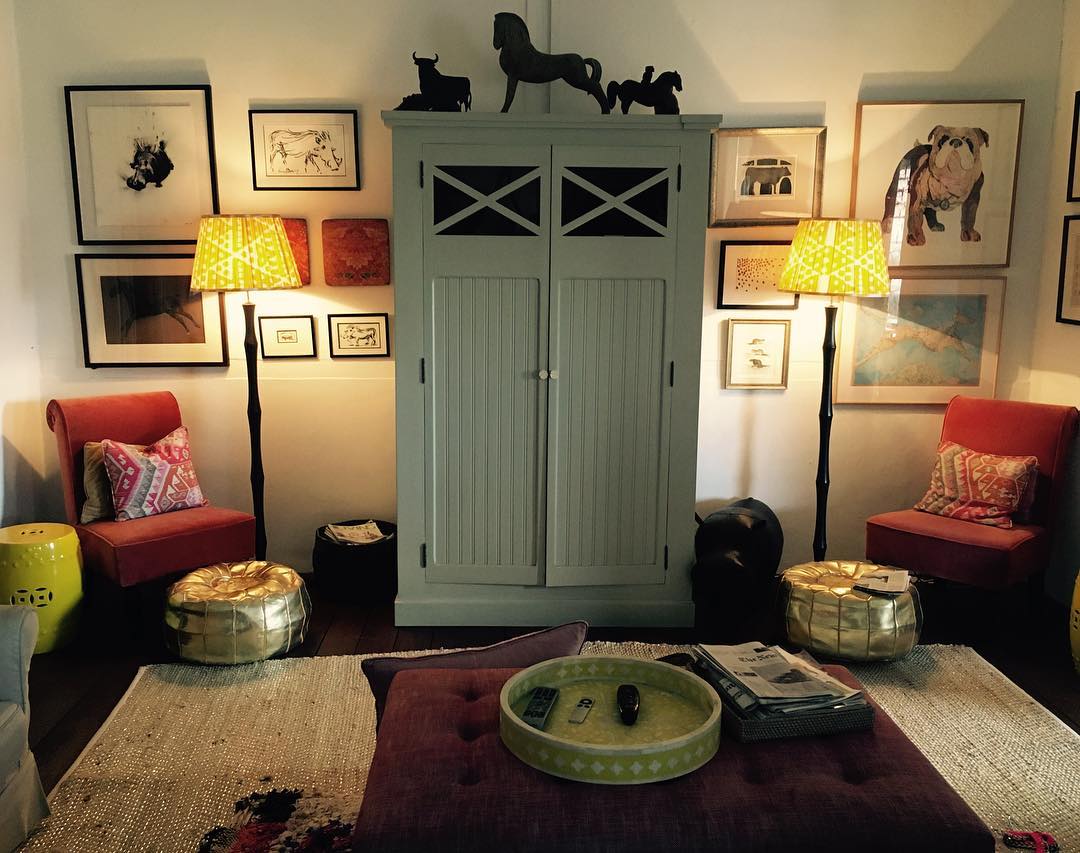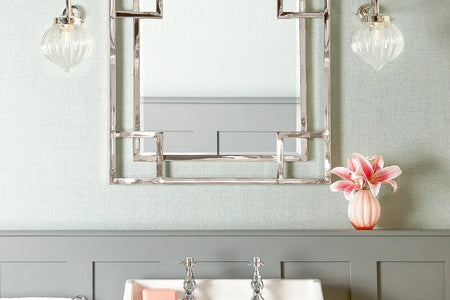
An expert lighting guide to calculating lumens, balancing ambience and function in different kinds of room, and layering light...
We all know how important the right levels of lighting are for creating beautiful interiors – but of course you also have to be practical. Exactly how much light you need in a room will depend on various things, including the size of the room, what the space is being used for, and the kind of atmosphere you’re looking to create.
This guide looks at how to get the right amount of light in a room, from how many lumens you need in a particular space, to combining different types of lighting to generate the perfect ambience.
How many lumens do you need?
Today’s energy-efficient LED light bulbs are measured in lumens (lm), with the number of lumens indicating how bright the bulb is. (Lumens are a more accurate way of measuring the quality of the light, compared with the previous measure of watts, which refers to how much energy a bulb uses.)
As a basic guide to how many lumens you’ll need in a room, first multiply the length and width of the room to get the square footage - so a room that’s 10 x 10 feet has a total area of 100 square feet.
Next, you need to work out how many lumens you need per square foot (also known as a ‘foot candle’). This will depend on the individual room and what it’s used for.
As a handy rule of thumb, a sitting room or bedroom will generally require around 10-20 lumens per square foot, while a bathroom or kitchen will need a stronger level of lighting, at around 70-80 lumens per square foot. To work out the lumens you need, simply multiply the square footage of the room by this figure. So, our 100 foot square sitting room with its 10-20 foot candles will need around 1,000-2,000 lumens in total.
That’s the science bit. However, this formula only gives you an idea of the basic level of light required in a room - as we’ll see, there’s more to lighting a room than lumens alone!
 '@jo.titchenerdesigns
'@jo.titchenerdesigns
What’s the best way to light a room?
As well as the size of the room and the basic level of lumens, it’s important to think about the different things the room will be used for.
Rooms such as the kitchen or sitting room are often multipurpose spaces. You can combine different types of lighting to accommodate this - from stronger, more targeted light for carrying out particular jobs, such as cooking, to lower level atmospheric light for relaxing and entertaining. This is known as ‘layering’ your lighting.
There are three main types of lighting: task lighting, ambient lighting and accent lighting:
Task lighting allows you to carry out specific tasks such as reading, sewing, chopping vegetables, or working at a desk, and will require a higher amount of lumens than other forms of lighting. For a task such as reading, you’ll need at least 450 lumens.
Ambient lighting refers to the overall level of light in a room, including the main light (such as a pendant light) and any other lights that contribute to the general level of illumination, such as wall-mounts, recessed lights, chandeliers or floor lamps.
Accent lighting allows you to draw attention to specific areas within a room, such as architectural features, ornaments, photos or artwork, and might include recess lights, table lamps, uplights or wall sconces. As a rule, accent lighting should be around three times stronger than ambient lighting.
By finding the right balance of task, accent and ambient lighting, you can create a range of different moods and effects. You can read our guide to layering light here.
How to light a sitting room
The sitting room is a multipurpose space, which is often used for a range of different tasks such as reading, watching TV, doing homework, having a light meal, entertaining or just generally relaxing. Your lighting scheme needs to reflect this, by providing plenty of light during the day, while allowing you to adjust things in the evening when you want to kick back, sink into the sofa and relax.
Remember, it’s important to take into account how much natural light there is in a room, for example from bay windows, skylights or patio doors, and how this light reflects from different surfaces in the room.
The main ambient light source in a sitting room is normally a pendant light or chandelier. Bringing in some additional ambient light can help to make the room look airy and spacious, so try supplementing the main light with floor lamps, wall lights and table lamps to highlight ceilings, corners and alcoves, giving an impression of balance and depth.
For rooms with high ceilings, a long pendant light will help to emphasise the height of the room. For specific tasks such as reading, sewing or doing homework, add in some task lighting such as a desk or table lamp or an adjustable floor lamp.
Meanwhile, you can use some accent lighting in the form of recess lights or uplighters to highlight any interesting architecture, favourite photos or treasured pieces of art.
When it comes to relaxing or entertaining in the evening, using a dimmer offers the ultimate in flexible lighting and will help to create a warm and chilled atmosphere. Be sure to choose a dimmable bulb too!
How to light a dining room
The dining room is an area where the right lighting can make all the difference. If your dining table doubles up as a workspace or homework area, you’ll need to make sure you have a sufficient level of light for working and feeding the kids during the daytime.
The table is the focal point of the dining room, so you should base your lighting around this point. Using a striking chandelier, a central low-hanging pendant light (or for a longer table, a series of pendant lights) above the dining table will make a real style statement.
If your dining table is in an open plan space, this will also help to bring focus and definition to the dining area. Aim to hang the bottom of the light fixture around 36 inches above the table. Then when the time comes to entertain, you can up the atmosphere by turning down the lumens with some low level lighting.
Some carefully placed table lamps and wall lights can combine to help create the right mood and sense of intimacy (and soft lighting is also more flattering for your guests!) Using a dimmer will help you to control the lighting - and the mood - according to your needs.
You can see more top tips on lighting a dining room here.
How to light a kitchen
The kitchen is another multifunctional space, which can be used for cooking, eating, entertaining or working, and it needs plenty of good, general light as well as light for specific tasks. Having the right mix of lighting can really add that extra bit of magic.
When it comes to the kitchen, you need direct, targeted light above the areas where you work, such as the cooker, sink, counters and other food preparation areas. This might come from a combination of carefully placed pendant lights, adjustable spotlights, or recessed lights. A single pendant light, or a row of pendants, look great above a kitchen island - odd numbers such as 3 or 5 tend to work the best.
If you also eat and entertain in your kitchen, use a pendant light or a striking chandelier hung low over the table to create a fabulous focal point, and to help delineate the dining space from the working areas. For extra atmosphere, add in some accent lighting such as shelf lights or wall lights.
You can find more kitchen lighting inspiration here.
How to light a bedroom
When it comes to lighting the bedroom, you’ll need to accommodate a range of different needs, including sleeping, reading, dressing and watching TV. Again, layering the light is key. In most bedrooms, the main source of ambient light comes from the ceiling light.
Placing a pendant light or a statement chandelier over the bed, around 8-12 inches from the ceiling, can provide a lovely decorative focal point.
If you’re partial to a spot of night time reading, our bedside table lamps come in a wide range of styles, colours and materials. Choosing a bedside light with a shade will provide a soft warm glow that’s perfect for bedtime (and will also avoid disturbing anyone else who may not be such a night owl).
For other practical tasks, such as dressing or applying makeup, you’ll need some focused task lighting from desk lamps, table lamps or low hanging pendants. You can then add in some accent lighting in different areas of the room, to create a soothing and relaxing vibe. Wall lights, table lights and floor lamps offer a softer, calmer alternative to the main light.
As well as the light fittings themselves, you should also give a thought to the ambience or ‘colour’ of the bulbs you are using. Blue and white light are known to increase alertness and inhibit sleep, while ‘warmer’ yellow lights are more relaxing, so they’re the perfect choice for a bedroom.
You can find out more in our guide to How to choose a lightbulb.
How to light a bathroom
Bathrooms are a more complex business, because there are regulations about what kind of fitting you can have close to water sources. However, you can still make your bathroom lighting beautiful. Read our full guide to bathroom lighting here.
At Pooky we make beautiful, affordable lighting for beautiful interiors. Browse our full range of lamps and shades here.











